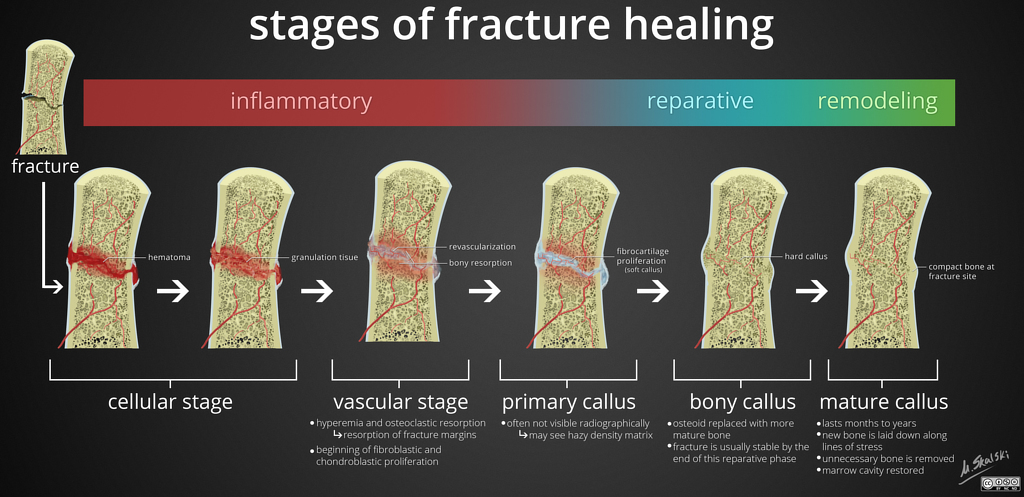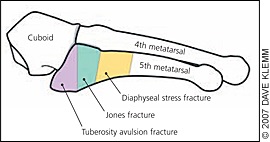


Recovery times vary, depending on the location and severity of the injury. Follow-up X-rays are needed to check on bone growth at the injury site. In surgery cases, a cast is used to protect and immobilize the injured area while it heals. Some Type 5 fractures are treated with surgery. The surgeon will put the bone fragments into alignment and may use implanted screws, wires, or metal plates to hold them in place. Types 3 and 4 usually need a surgical realignment of the bone, called open reduction. Sometimes the doctor will wait to see how bone growth develops before treatment. The doctor may suggest keeping weight off the affected bone, to make sure that the growth plate isn’t damaged further. Type 5 fractures are more difficult to diagnose and are likely to affect proper bone growth. Your child may need medication for pain and a local or possibly general anesthetic for the reduction procedure. Sometimes these fractures may require nonsurgical realignment of the bone, a process called closed reduction. The doctor will put the affected bone in a cast, splint, or sling to keep it in the right place and protect it while it heals. Usually, types 1 and 2 are simpler and don’t require surgery. Treatment will depend on the type of Salter-Harris fracture, the bone involved, and whether the child has any additional injuries. A widening of the growth plate may provide a clue to this type of injury. Type 5 fractures are difficult to diagnose.


The knee and ankle are most often involved.įewer than 1 percent of Salter-Harris fractures are type 5. This uncommon fracture occurs when the growth plate is crushed or compressed. This can happen at any age, and it may affect bone growth. This fracture occurs when a force hits the growth plate, the rounded part of the bone, and the bone shaft.Ībout 10 percent of Salter-Harris fractures are type 4. About 10 percent of Salter-Harris fractures are type 3. The fracture may involve cartilage and enter into the joint. This fracture occurs when a force hits the growth plate and the rounded part of the bone, but doesn’t involve the bone shaft. About 75 percent of Salter-Harris fractures are type 2. This is the most common type and happens most often in children over 10. This fracture occurs when the growth plate is hit and splits away from the joint along with a small piece of the bone shaft. About 5 percent of Salter-Harris fractures are type 1. This fracture occurs when a force hits the growth plate separating the rounded edge of the bone from the bone shaft. The narrower part of the bone is called the metaphysis. The rounded bone edge is called the epiphysis. The growth plate is known as the physis, from the Greek word “to grow.” The growth plate is located between the rounded top of the bone and the bone shaft. The higher numbers have a higher risk of possible growth problems. There are five main types, distinguished by the way the injury impacts the growth plate and surrounding bone. Salter-Harris fractures were first categorized in 1963 by Canadian doctors Robert Salter and W.


 0 kommentar(er)
0 kommentar(er)
